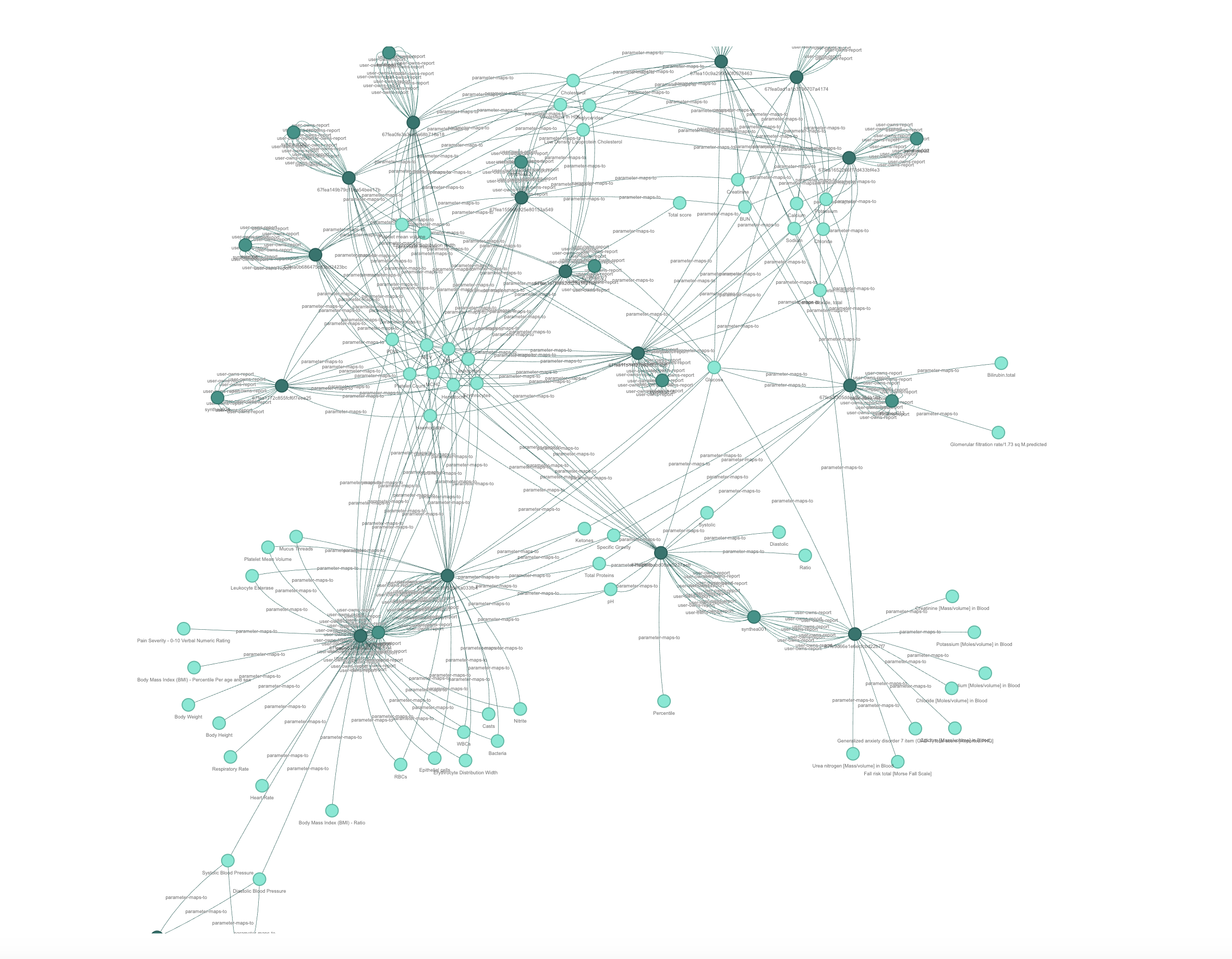Quick Summary
Health lockers help you store files. Aether’s medical knowledge graph connects labs, imaging, diagnoses, meds, and timelines and turns scattered PDFs into usable intelligence across the US, India, UAE, and Australia.

The problem everyone already feels
Your history sits in PDFs, images, portals, and emails. When a clinician asks for everything relevant, you scramble. Digital health lockers gave us a place to put it all, but storage alone does not make the data work for you.
The gap: storage ≠ understanding
- Two blood tests, two years apart: what changed, and does it matter?
- A CT finding: how does it relate to current meds or family history?
- Reports from the US, India, UAE, and Australia: can they be normalized and compared?
Most systems file your records; they do not connect them. That is the leap Aether makes.
The engine: a medical knowledge graph
A knowledge graph transforms isolated values into a living, connected model of your health. It maps entities and relationships, then keeps them consistent over time so explanations stay contextual and trends are visible.
| Capability | What it means for you |
|---|---|
| Trends before flags | Spot meaningful movement in labs (for example A1c, LDL, hemoglobin) even when numbers look normal. |
| Context, not fragments | Connect imaging with diagnoses and medications to focus on what matters for decisions. |
| Cross border normalization | Align units, ranges, and terminology so records from different countries speak a common language. |
| Explainability | Convert clinical jargon into plain, patient friendly language (without losing precision). |
Built for US, India, UAE, and Australia
- United States: Fragmented EMRs. Aether provides a patient first longitudinal view.
- India: ABHA and ABDM digitize records. Aether adds the intelligence layer and consent based sharing.
- UAE: Large expat population. Aether reconciles cross country histories into one narrative.
- Australia: My Health Record adoption is strong. Aether focuses on interpretation and trends.
What it feels like in real life
- Upload a 6 page lab PDF. Aether extracts values automatically.
- Understand key findings with a plain language summary.
- See abnormal values and how they have moved across years.
- Align meds, imaging, and diagnoses on a single timeline.
- Share a consent link with your doctor or caregiver; revoke anytime.
Privacy and control
- Encryption in transit and at rest
- Consent based sharing links with revocation and access logs
- HIPAA and GDPR aligned practices; see Privacy Policy
Try Aether (iOS)
- Upload a PDF, then get a plain language summary
- See abnormal values and trends at a glance
- Share safely with consent links
Related reading
FAQ
What is a medical knowledge graph?
A structured map that connects your labs, meds, diagnoses, imaging, allergies, and vitals over time so software can explain what matters.
Does this work outside my country?
Yes. Aether normalizes units, ranges, and terminology so records from the US, India, UAE, and Australia are comparable.
How is my data kept private?
Encryption at rest and in transit, consent based sharing links, revocation, and access logs. See our Privacy Policy.
The first wave gave us storage. The next wave gives us clarity. Aether’s knowledge graph turns a lifetime of records into decisions you can use.